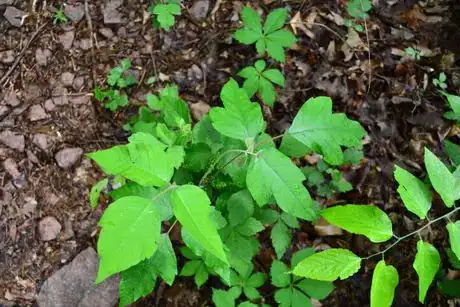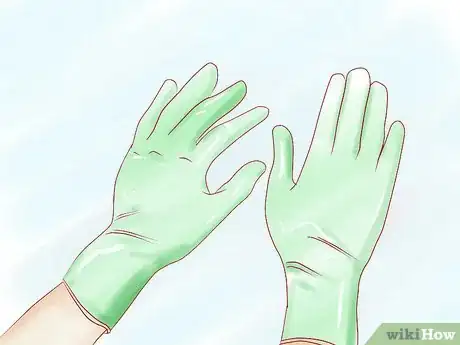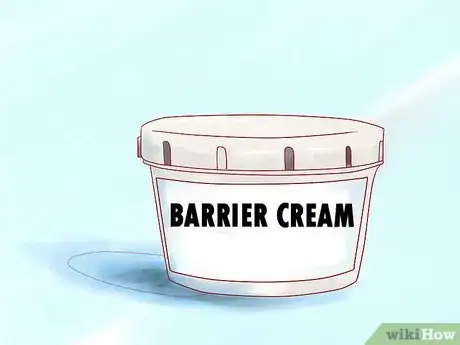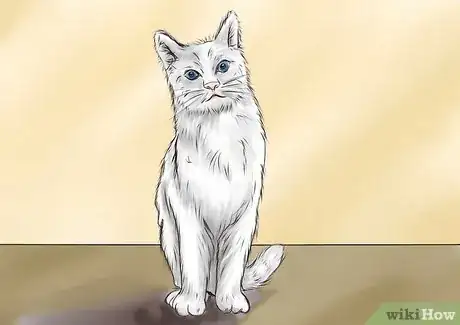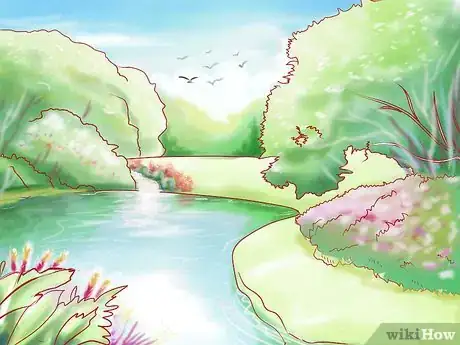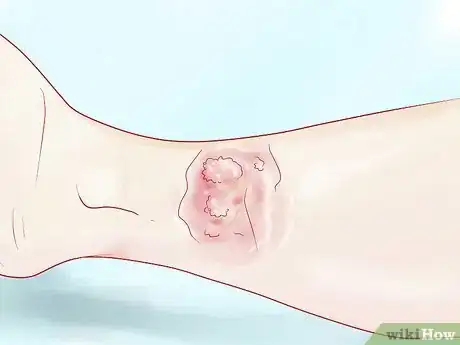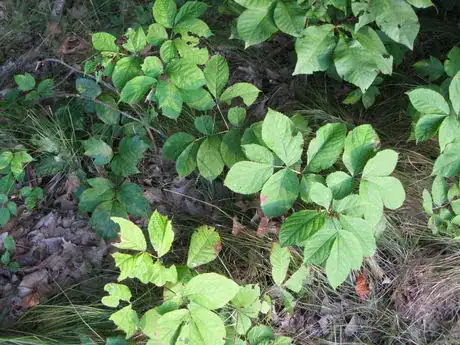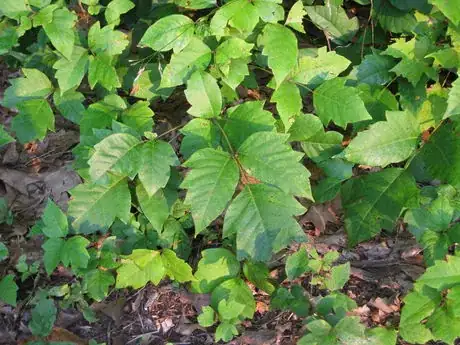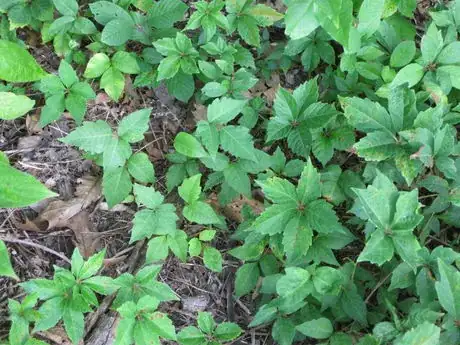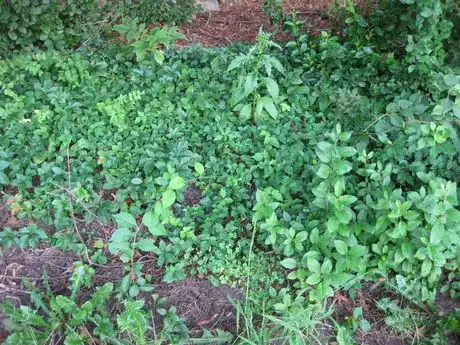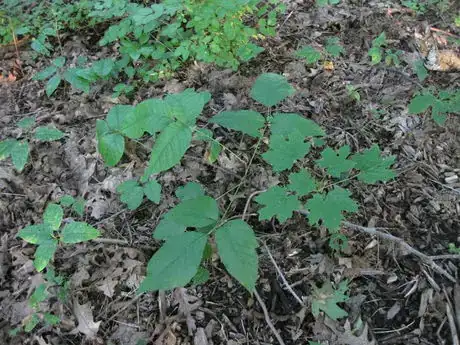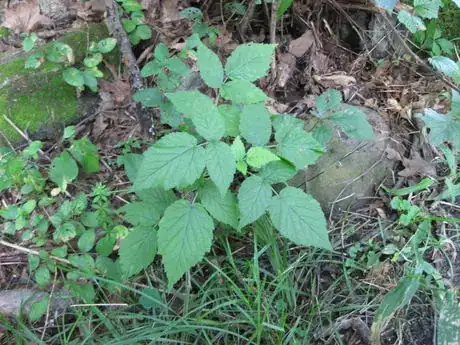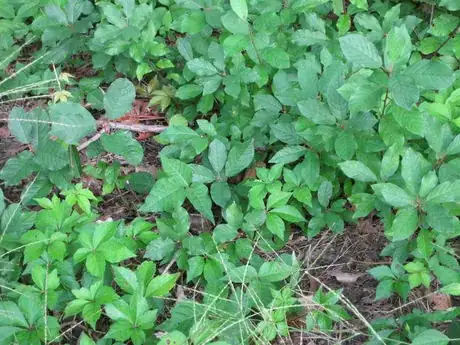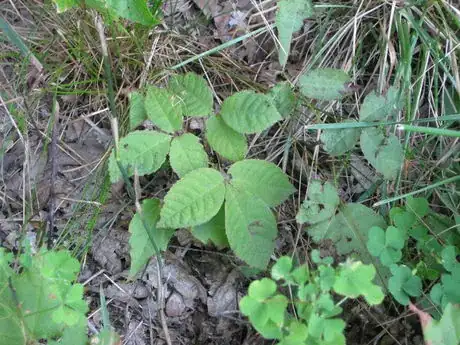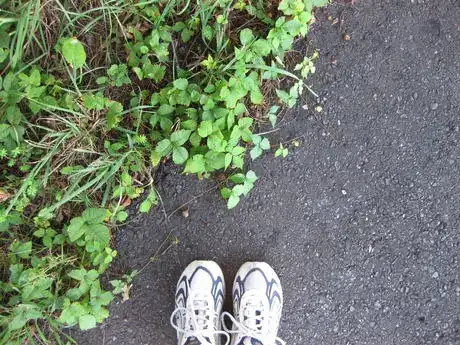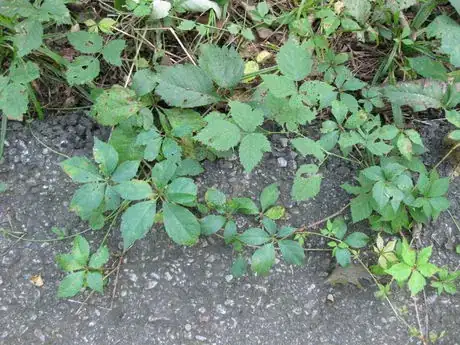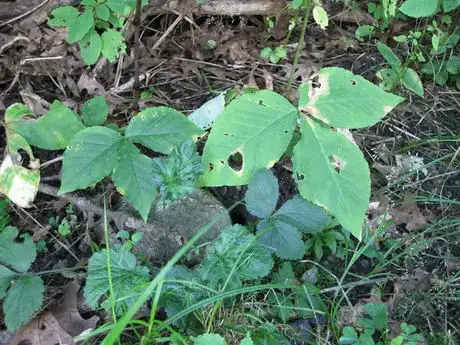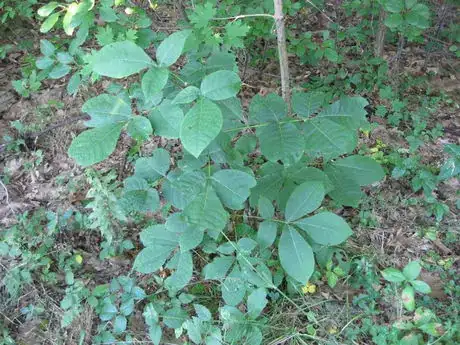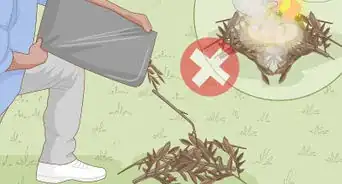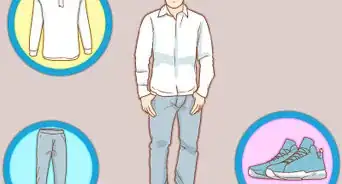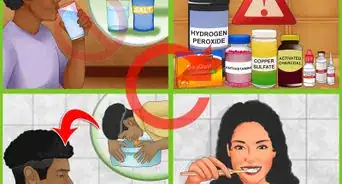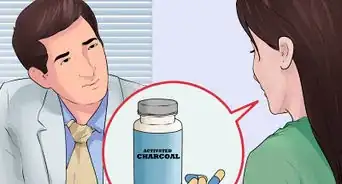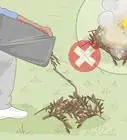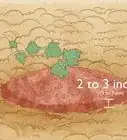wikiHow is a “wiki,” similar to Wikipedia, which means that many of our articles are co-written by multiple authors. To create this article, 43 people, some anonymous, worked to edit and improve it over time.
There are 16 references cited in this article, which can be found at the bottom of the page.
wikiHow marks an article as reader-approved once it receives enough positive feedback. In this case, 93% of readers who voted found the article helpful, earning it our reader-approved status.
This article has been viewed 489,831 times.
Learn more...
Dermatologists estimate that about 15% of the population has no allergic reaction to urushiol, the toxic oil or resin found in poison ivy, poison oak, and poison sumac. For the rest of the public, however, a brush with these woody shrubs or vines has miserable consequences, including blisters, swelling of the skin, and an itchy rash that can last up to three weeks. To avoid getting poison ivy or oak, take the following precautions.
Steps
-
1Learn to identify poison ivy, poison oak, and poison sumac, and when you see them, avoid them at all costs. All are woody vines or shrubs that grow independently or climb and trail up trees, fences, and other objects, and along the ground.
-
Poison Ivy:
- Leaves. Poison ivy has thin, often shiny, bright-green compound leaves. The edges of the leaves usually have large indentations at irregular intervals. The leaves occur in threes, with one leaf at the end of the stem, and two leaves opposite each other on the stem. Hence the saying, "leaves of three, leave it be." The young leaves may be orange, and in the fall the leaves turn red.
- Vine. The stem is woody and in its native territory is the only native vine with aerial roots. Aerial roots are small roots that grow out of the stem and also help the vine to cling to a support. English Ivy also has aerial roots, but it is not a native plant, and its leaves are very different from those of poison ivy. The aerial roots are commonly seen on older plants growing up or over non-soil supports (stones, trees, fences, etc.). They are often reddish. The aerial roots make the main stem appear hairy, hence the saying, "hairy rope, don't be a dope."
- Flowers and berries. Depending on the time of year, the plant may have clusters of small, yellowish-green flowers (usually in June) or hard, greenish-white berries (fall). Deer and birds eat the berries, and excrete the seeds, causing new plants to sprout in new places.
-
Poison oak grows primarily in dry areas and also has leaves of three leaflets, and while the leaves often resemble "true oak" leaves, they may take on other appearances as well. They are usually green in spring and summer, turning reddish in late summer and fall. The flowers and berries are white to yellowish-green, as in poison ivy (hence another saying, "berries white, poisonous sight").
-
Poison sumac has leaves of 7-13 leaflets, produces a small, white or grey berry, and is found in boggy or riparian areas. Hereafter, the article refers only to “poison ivy” for brevity, but the steps for poison oak and poison sumac are the same.
-
Poison Ivy:
-
2Wear long pants, long-sleeve shirts, socks, and fully-enclosed footwear when walking in poison-ivy infested areas. Not only will covering your skin help protect you from poison ivy, but mosquitoes won't bother you as much either.Advertisement
-
3Wear gloves when working where poison ivy may be present, such as when cutting down trees in the woods, mowing brush, etc. It is recommended that you wear plastic gloves over cotton gloves because urushiol (the oil in poison ivy that is responsible for the allergic reaction) can eventually soak through cotton gloves. Not only is getting poison ivy on your hands a pain, it makes it very easy to spread to the rest of your body, so gloves are an important defense.Wearing pants and long sleeve shirts can give you more time before it has contact with your skin.
- Exercise caution not to touch your face or eyes (or other exposed skin) with hands or gloves that may have come in contact with poison ivy.
-
4Apply a barrier cream, such as Ivy Block or Stokoguard, if you know you have a good chance of exposure to poison ivy. While no vaccine or medicine has been shown to prevent reactions to poison ivy, barrier creams containing bentoquatam seem to be effective in slowing the absorption of urushiol into the skin. Apply the cream as directed, usually about an hour before potential exposure, and thoroughly wash it off within four hours, reapplying as necessary.
-
5Watch out for poison ivy oil carried back on pets. Even if you avoid poison ivy, your pets may not, particularly if you let them run free in the woods or in a large yard. The urushiol sticks to pets' fur but typically does not irritate them, so you won't be able to tell if they've gotten into it. Keep dogs on a leash and keep a watchful eye on all pets or farm animals when in poison ivy country. If you think there's a chance your pet may have been exposed, thoroughly wash it with a good pet shampoo. Wear plastic gloves, cover exposed skin with clothing, and wear safety goggles. Try to prevent your pet from shaking off on the first wash (this is harder than it sounds; hence the safety goggles). Wash and thoroughly rinse your pet with the shampoo and warm water three times in succession to make sure the urushiol is gone. Towel dry, and immediately launder the towel in the washing machine. Let your pet fully dry before touching it with bare skin.
-
6Be careful around streams or ponds. If the plants are hanging into the water the oils can spread and you may be exposed without ever having seen the plant. This can be particularly serious if you swim or bathe in contaminated water
-
7Beware latent resin. Urushiol resin can remain active for a long time—years if kept dry—so handle potentially exposed objects with care. People commonly end up with a reaction from touching garden tools that have been left in the yard, fences from which poison ivy has recently been removed, and clothes that were exposed to urushiol but were put away before the wearer came in contact with the oil. Thoroughly wash or dispose of clothes, tools, or other objects which may have come into contact with poison ivy, and use the same caution touching dead poison ivy plants or plant parts as you would if they were alive. To wash objects, use hot, soapy water and let the clothing or object dry outside for several days.
-
8Control poison ivy manually. Spraying poison ivy with products such as Roundup or Ortho Poison Ivy Killer is not an environmentally friendly choice, especially since such products will usually kill other nearby plants as well. If you wish to remove poison ivy by hand, make sure to dress appropriately, wear barrier cream, and follow all other necessary precautions. Manual removal can be tedious, because you must remove all parts of the plant—stems, leaves, and roots—or it may regrow.
-
9Dispose of poison ivy or exposed objects properly. Check with your municipality to find out any local regulations on poison ivy disposal. In general, dispose of poison ivy or contaminated objects in biodegradable plastic garbage bags, and mark the bags to warn your garbage handlers. You may also bury the poison ivy remnants, a wiser choice, but be sure to bury them deep enough (at least 12 inches to be safe) to prevent regrowth.
-
10Wash exposed skin immediately. It takes about 10-30 minutes after contact for urushiol to bind with skin, so fast cleaning may prevent a reaction. If you think your skin may have been exposed to poison ivy, clean the affected area with rubbing alcohol, and then wash it with cool water. Do this while outside, if possible, and when you are finished proceed immediately to take a hot shower using plenty of soap. Scrub under fingernails thoroughly to wash off any remaining resin.
- You can also use Tecnu Extreme or Zanfel cleanser if you know you have been exposed to poison ivy. They are both very effective at removing the urushiol, which is vital. Even if used at the first sign of itching or rash, they can reduce the effect and severity of the allergic reaction.
- See How to Treat Poison Ivy and Poison Oak for more details.
-
11Be sure of your ability to identify poison ivy. Take this photo quiz!
- Figure 1. Poison ivy or not? Click the link to the right for the answer.[1]
- Figure 2. Poison Ivy or not? Click the link to the right for the answer.[2]
- Figure 3. Poison ivy or not? Click the link to the right for the answer.[3]
- Figure 4. Poison ivy or not? Click the link to the right for the answer.[4]
- Figure 5. Poison ivy or not? Click the link to the right for the answer.[5]
- Figure 6. Poison ivy or not? Click the link to the right for the answer.[6]
- Figure 7. Poison ivy or not? Click the link to the right for the answer.[7]
- Figure 8. Poison ivy or not? Click the link to the right for the answer.[8]
- Figure 9. Poison ivy or not? Click the link to the right for the answer.[9]
- Figure 10. Poison ivy or not? Click the link to the right for the answer.[10]
- Figure 11. Poison ivy or not? Click the link to the right for the answer.[11]
- Figure 12. Poison ivy or not? Click the link to the right for the answer.[12]
- Figure 13. Poison ivy or not? Click the link to the right for the answer.[13]
- Figure 14. Poison ivy or not? Click the link to the right for the answer.[14]
- Figure 15. Poison ivy or not? Click the link to the right for the answer.[15]
- Figure 16. Poison ivy or not? Click the link to the right for the answer.[16]
Community Q&A
-
QuestionIf I rub my hands in dirt after exposure, does that help prevent it in the short term?
 Community AnswerIt does not really help unless the dirt that you are in contact with is very moist. You may have heard that mud helps poison ivy or oak go away, and it does.
Community AnswerIt does not really help unless the dirt that you are in contact with is very moist. You may have heard that mud helps poison ivy or oak go away, and it does.
Warnings
- Like any other allergic reaction, poison ivy reactions can get very serious. Contact your physician or request immediate medical assistance if you experience extreme symptoms.⧼thumbs_response⧽
- Mango is a close relative of Poison Ivy and contains trace amounts of urushiol. If you exhibit a very strong reaction to poison ivy you should also be careful when around mango trees or handling mangoes.⧼thumbs_response⧽
- Follow the manufacturer's directions and heed product warnings when using any herbicide. These products may be harmful to humans and pets, as well as to garden plants.⧼thumbs_response⧽
- It's important to first wash with rubbing alcohol or vinegar or at least rinse off with cool water before taking a hot shower with soap. Hot water opens pores and can speed the urushiol's entry into the skin. Rather than dissipating the oil, soap will only spread it around. Don't reenter poison ivy after you've washed with rubbing alcohol, however, as the alcohol dries your skin and removes its protective oils.⧼thumbs_response⧽
- Never burn poison ivy. Burning can cause the oil to get into the air; from there, you can breathe it in or get it in your eyes. The smoke from burning poison ivy will cause the same reaction in your lungs that normally happens on the skin. Reactions to this kind of exposure can be far more serious than those resulting from topical contact; in fact breathing the smoke from burning poison ivy can cause death.⧼thumbs_response⧽
Things You'll Need
- Long pants, long-sleeve shirts
- Socks and fully-enclosed shoes. Boots may be even better!
- Gloves (plastic over cotton)
- Barrier cream
- Rubbing alcohol
- Vinegar
- Soap and water - only AFTER cleansing with rubbing alcohol, vinegar, or commercial cleanser like Tecnu, or mineral spirits
